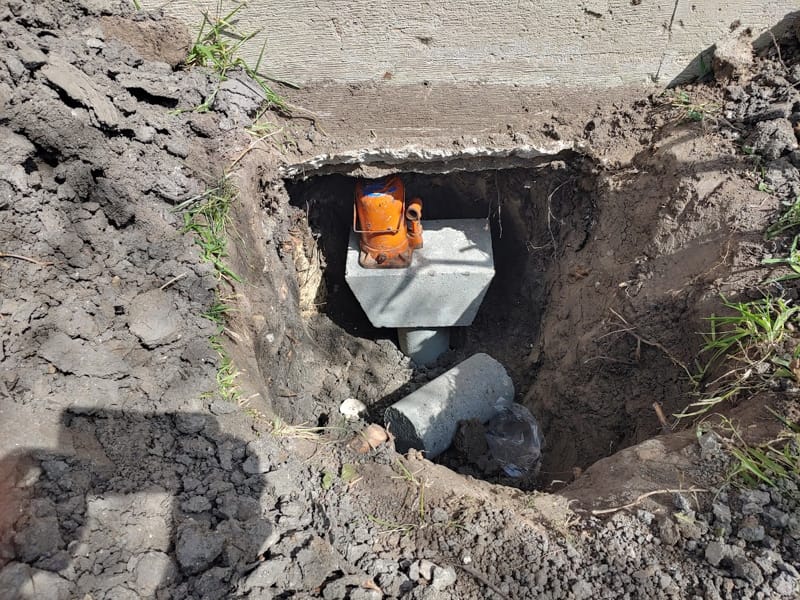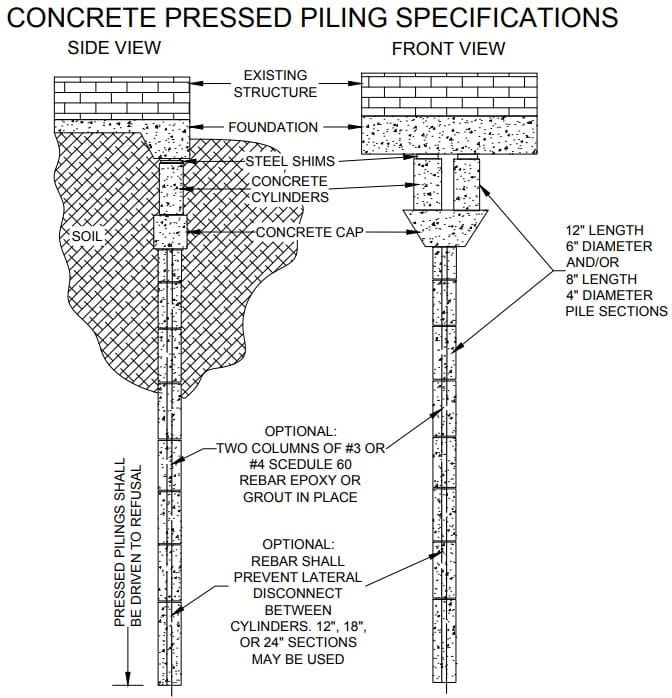Services
Home > Foundation Repair
Foundation Repair
Foundation Repair
DEFINITION OF FOUNDATION REPAIR
Foundation repair refers to the process of repairing and stabilizing the foundation of a building or structure that has been damaged or compromised. The foundation of a building is crucial for its structural integrity, as it supports the weight of the entire structure and ensures stability.
There are various reasons why a foundation may require repair, including:
- Settling: Over time, the soil beneath a building may settle unevenly, causing the foundation to sink or shift.
- Poor Soil Conditions: Some soil types, such as expansive clay soils, can expand and contract significantly with changes in moisture levels, leading to foundation movement.
- Water Damage: Excessive moisture or poor drainage around the foundation can cause soil erosion and weaken the foundation.
- Tree Roots: Large tree roots can grow beneath a building and exert pressure on the foundation, causing cracks or other damage.
- Construction Defects: Poor construction practices or inadequate materials can result in foundation issues.
FOUNDATION REPAIR TYPES
Foundation repair typically involves a thorough inspection of the foundation to assess the extent of the damage and determine the underlying cause. Common methods of foundation repair include:
Underpinning: This involves stabilizing the foundation by adding support beneath it, such as helical piers, steel push piers, or concrete pilings.
Grouting: Injecting grout or other materials into the soil beneath the foundation to fill voids and lift the foundation back into place.
Slab Jacking: Also known as mudjacking, this method involves injecting a slurry mixture beneath a sunken concrete slab to lift it back to its original position.
Reinforcement: Installing additional support, such as steel beams or carbon fiber straps, to strengthen and stabilize the foundation.
Drainage Correction: Addressing issues with poor drainage around the foundation to prevent water damage and soil erosion.
The specific repair method used will depend on factors such as the type and severity of the damage, the underlying soil conditions, and the structural requirements of the building. It’s essential to work with qualified professionals to assess the situation accurately and determine the most appropriate repair solution.
FOUNDATION TYPES IN RESIDENTIAL CONSTRUCTION
In residential construction, several types of foundations are commonly used, each suited to different soil conditions, building designs, and local building codes. Here are some of the most common types of residential foundations:
Slab-on-Grade: Slab-on-grade foundations are one of the simplest and most cost-effective types of foundations. They consist of a single concrete slab poured directly onto the ground, with no basement or crawl space beneath. Slab-on-grade foundations are common in regions with warm climates and stable soil conditions.
Crawl Space: Crawl space foundations elevate the home slightly above ground level, providing a small space (typically 1-3 feet) between the floor of the house and the ground. This type of foundation allows for easier access to plumbing, electrical wiring, and HVAC systems compared to slab foundations. Crawl space foundations are often used in areas with high water tables or expansive clay soils.
Basement: Basement foundations involve excavating a deeper hole beneath the home to create a fully or partially below-ground level space. Basements provide additional living or storage space and can offer protection against severe weather. They are common in regions with cold climates where frost depths require deeper footings.
Concrete Block or Concrete Masonry Unit (CMU): This type of foundation uses concrete blocks or CMUs stacked on top of each other to create a foundation wall. These blocks are typically reinforced with steel and filled with concrete. CMU foundations are commonly used in areas with unstable soil conditions or where building codes require specific foundation types.
Poured Concrete Walls: Poured concrete walls involve pouring concrete into forms to create a continuous foundation wall. This method provides strength and durability and is often used in areas prone to high winds or seismic activity.
Pier and Beam: Pier and beam foundations consist of a series of concrete piers or wooden posts set into the ground to support the weight of the structure. Horizontal beams are then placed on top of the piers, upon which the floor joists and subfloor are installed. This type of foundation is common in areas with expansive clay soils or where ventilation and access to utilities are important.




